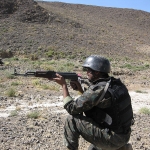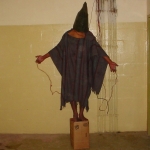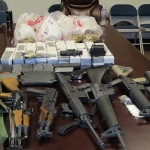Militarizing the Middle East: Arms Shipments Continue Despite Abuses
A mysterious ship laden with weapons is expected to dock in Port Said, Egypt, this week. The MV Schippersgracht left Southport in North Carolina, the Pentagon's largest ammunition port, on March 3, 2012. The ship is on contract to the U.S. Navy's Military Sealift Command, which refuses to explain what weapons are on board or what the ultimate destination of the weapons are, claiming security concerns.
Data on the MV Schippersgracht shipment came from an investigative collaboration between Amnesty International, Transarms and the International Peace and Information Service (IPIS).
Brian Wood, Amnesty International's head of arms control, raised the alarm: "This ship of shame should not be allowed to unload its dangerous cargo in Egypt, and there is a substantial risk that this is what it plans to do," he said in an Amnesty press release.
There is good reason to worry - the U.S. is one of the major sources of weapons that both the current and the previous regimes in Cairo have used against their citizens.
For example, a shipment for the Egyptian Ministry of Interior arrived from the US on November 26, 2011, carrying at least seven tons of "ammunition smoke" - which includes chemical irritants and riot control agents such as tear gas - from Combined Systems, Inc. of Jamestown, Pennsylvania. A U.S. State department spokesperson later confirmed that they had approved licenses for the export of such devices to Egypt.
That very month, more than two dozen people were killed and hundreds injured during protests against the ruling Supreme Council of the Armed Forces (SCAF). Protestors picked up spent cartridges in Tahrir Square marked with the logo of Combined Systems Inc.
Nor was that the first time that Combined Systems Inc. weaponry has been used against protestors. In late January 2011, during the first protests of the Arab Spring, protestors collected similar tear gas canisters stamped with the logo of Combined Systems Inc.
"These licences were authorized during a period where the Egyptian government responded to protests by using excessive and often lethal force. It is inconceivable that the US authorities did not know of evidence of widely documented abuses by the Egyptian security forces. These licences should not have been granted," says Wood.
The U.S. accounts for 30 percent of global arms sales, according to a new report out from the Stockholm International Peace Research Institute (SIPRI). Russia is close behind at 24 percent, according to the annual publication. (The report does not track China, which is believed to be a close contender for first or second place.)
Among the details in SIPRI's new report - Syria, which has embarked on a major crackdown on democracy activists and dissidents in the last 12 months - has increased its arms purchases by 580 percent since 2002, mostly from Russia.
European countries are just as deeply involved in militarizing the Middle East. Der Spiegel has obtained a report from the European Commission that shows that combined exports from European Union member states a delivered at least â¬3.3 billion ($4.34 billion) worth of military equipment and licenses to Saudi Arabia in 2010. While Saudi has not seen the mass crackdowns that Syria is experiencing, it has supplied weapons to neighboring Bahrain which has violently suppressed protests.
This coming July, government negotiators from around the world are expected to convene in New York, to discuss how to address this burgeoning traffic in small arms with a new global treaty. Not surprisingly, countries like the U.S. and Russia are reluctant to commit to any binding agreements. We'll keep you posted on the arms companies and governments that attempt to water down this important new legislation.



